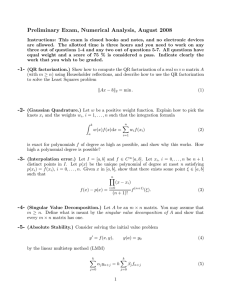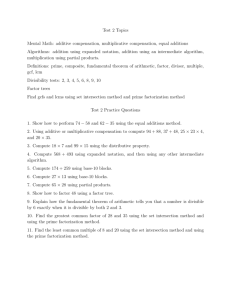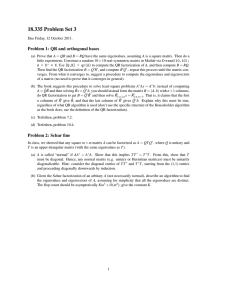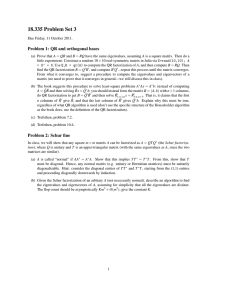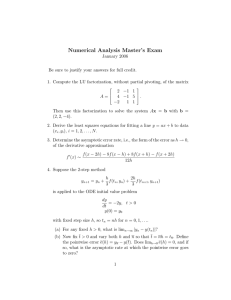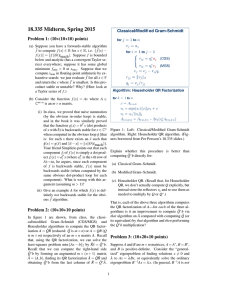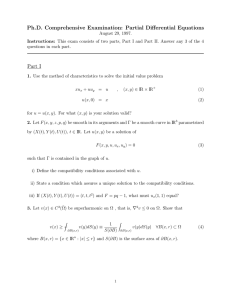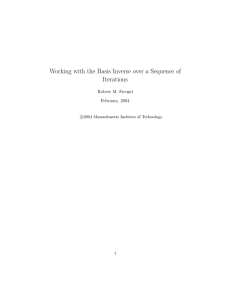M.S. Numerical Exam 2014
advertisement
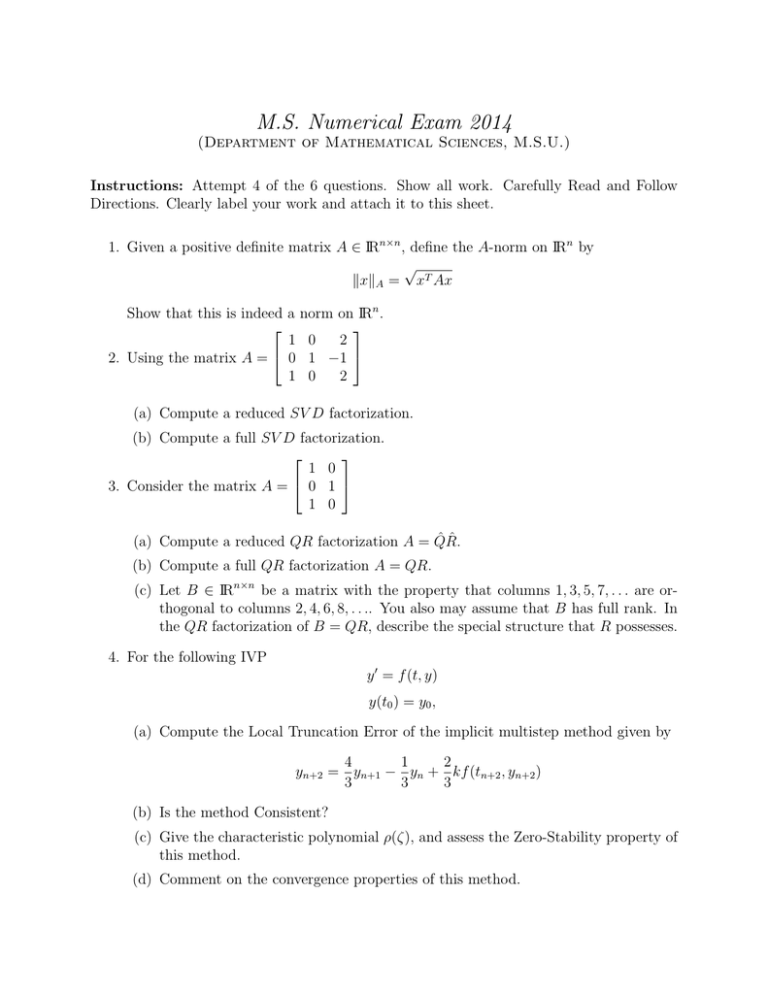
M.S. Numerical Exam 2014 (Department of Mathematical Sciences, M.S.U.) Instructions: Attempt 4 of the 6 questions. Show all work. Carefully Read and Follow Directions. Clearly label your work and attach it to this sheet. 1. Given a positive definite matrix A ∈ IRn×n , define the A-norm on IRn by √ kxkA = xT Ax Show that this is indeed a norm on IRn . 1 0 2 2. Using the matrix A = 0 1 −1 1 0 2 (a) Compute a reduced SV D factorization. (b) Compute a full SV D factorization. 1 0 3. Consider the matrix A = 0 1 1 0 (a) Compute a reduced QR factorization A = Q̂R̂. (b) Compute a full QR factorization A = QR. (c) Let B ∈ IRn×n be a matrix with the property that columns 1, 3, 5, 7, . . . are orthogonal to columns 2, 4, 6, 8, . . .. You also may assume that B has full rank. In the QR factorization of B = QR, describe the special structure that R possesses. 4. For the following IVP y 0 = f (t, y) y(t0 ) = y0 , (a) Compute the Local Truncation Error of the implicit multistep method given by 1 2 4 yn+2 = yn+1 − yn + kf (tn+2 , yn+2 ) 3 3 3 (b) Is the method Consistent? (c) Give the characteristic polynomial ρ(ζ), and assess the Zero-Stability property of this method. (d) Comment on the convergence properties of this method. 5. (a) Determine the general solution to the linear difference equation 2U n+3 − 5U n+2 + 4U n+1 − U n = 0 Hint: One root of the characteristic polynomial is at ζ = 1. (b) Determine the solution to this difference equation with the starting values U 0 = 11, U 1 = 5, and U 2 = 1. What is U 10 ? (c) For the following IVP y 0 = f (t, y) y(t0 ) = y0 , approximate y(t) by applying the LMM described by 2U n+3 − 5U n+2 + 4U n+1 − U n = k(β0 f (U n ) + β1 f (U n+1 )). For what values of β0 and β1 is local truncation error O(k 2 )? (d) Suppose you use the values of β0 and β1 just determined in this LMM. Is this a convergent method? 6. For the two-point BVP described by u00 − u = f (x), u(0) = 0, x ∈ (0, 1) u(1) = 0, give the general form of the linear system of equations that you would solve in order to approximate u(x) using the finite difference technique of a 2nd order centered difference for the derivative approximation with a step size of h. Show that the system is guaranteed to be uniquely solvable. 2
